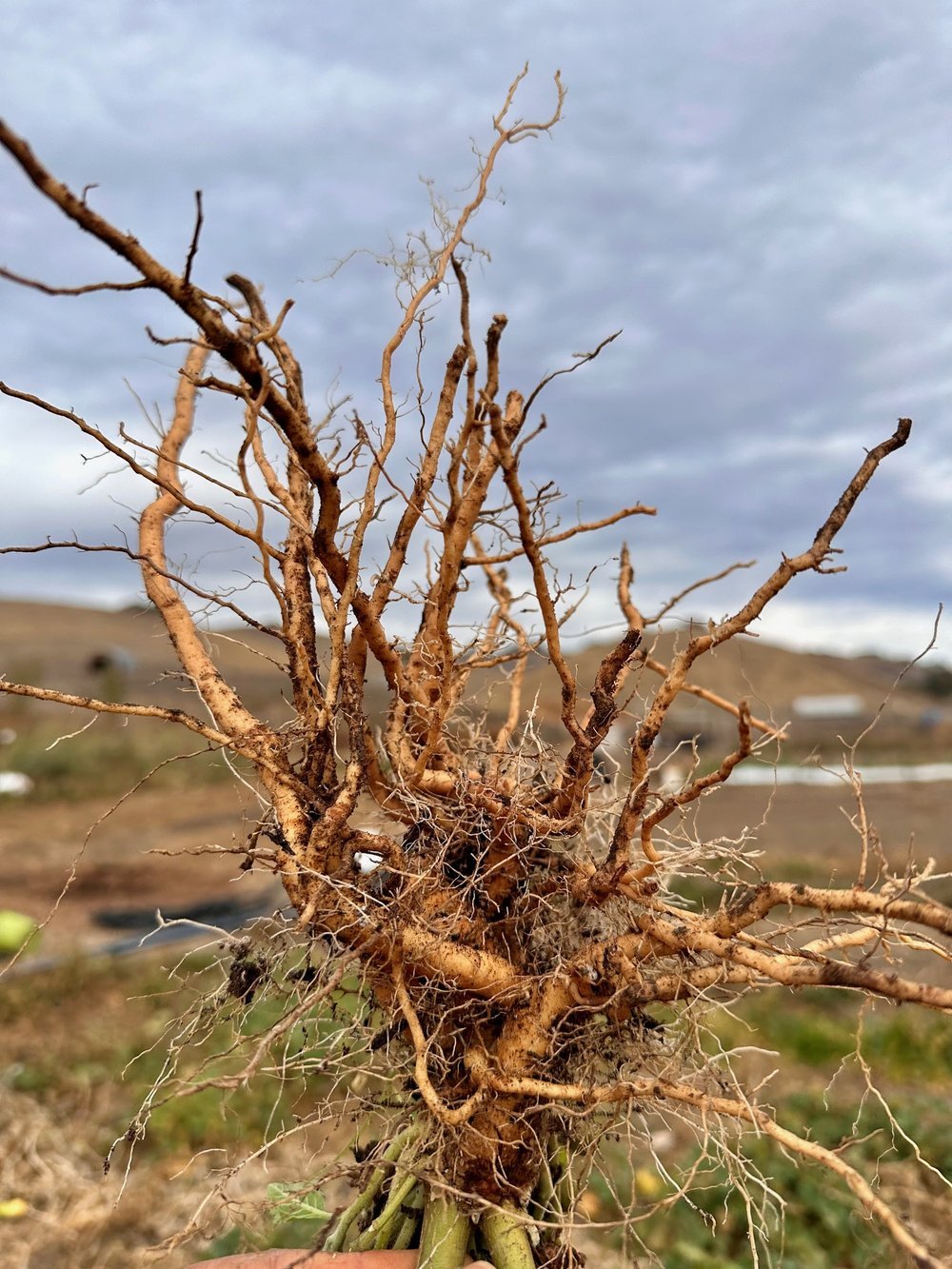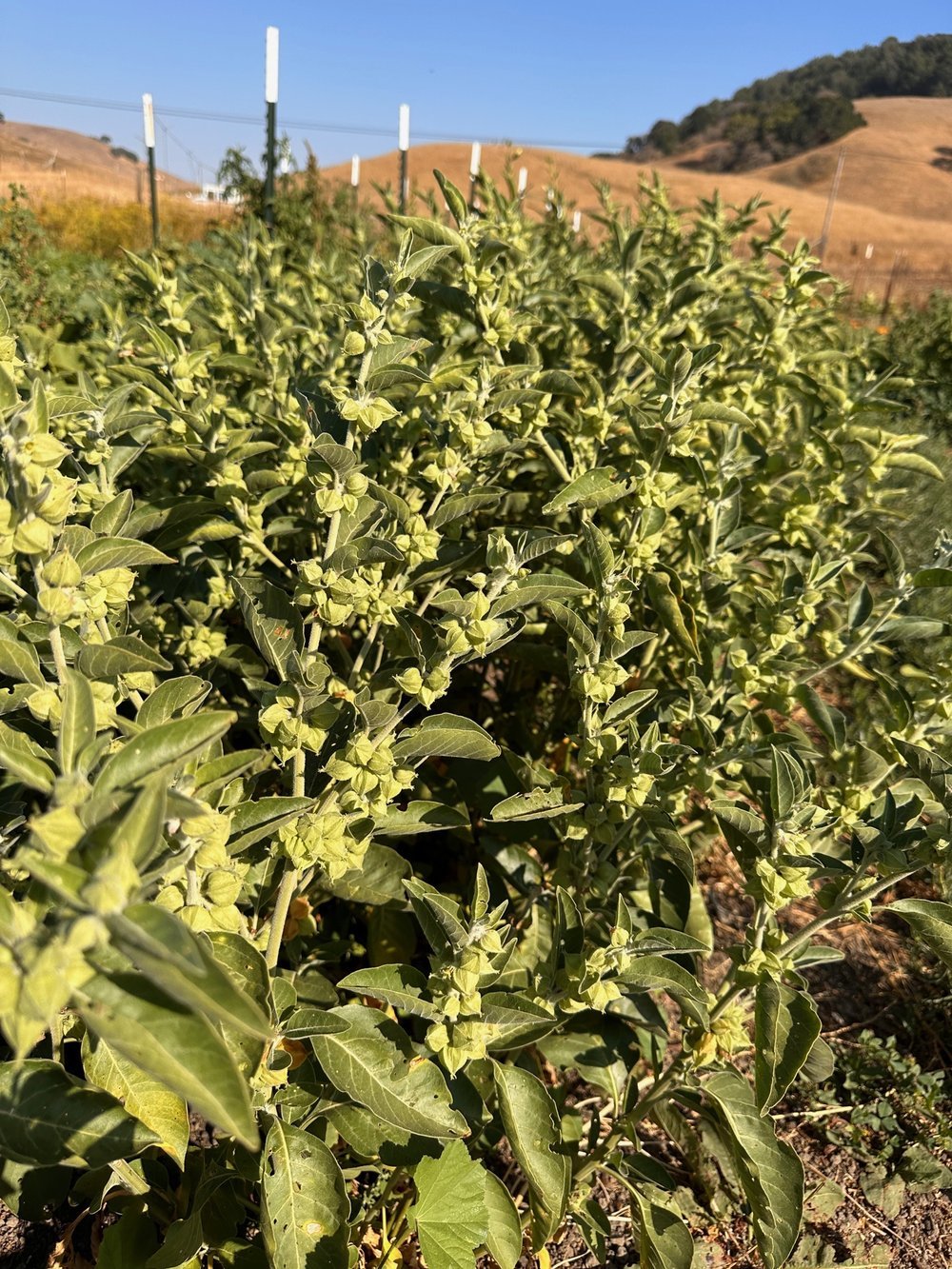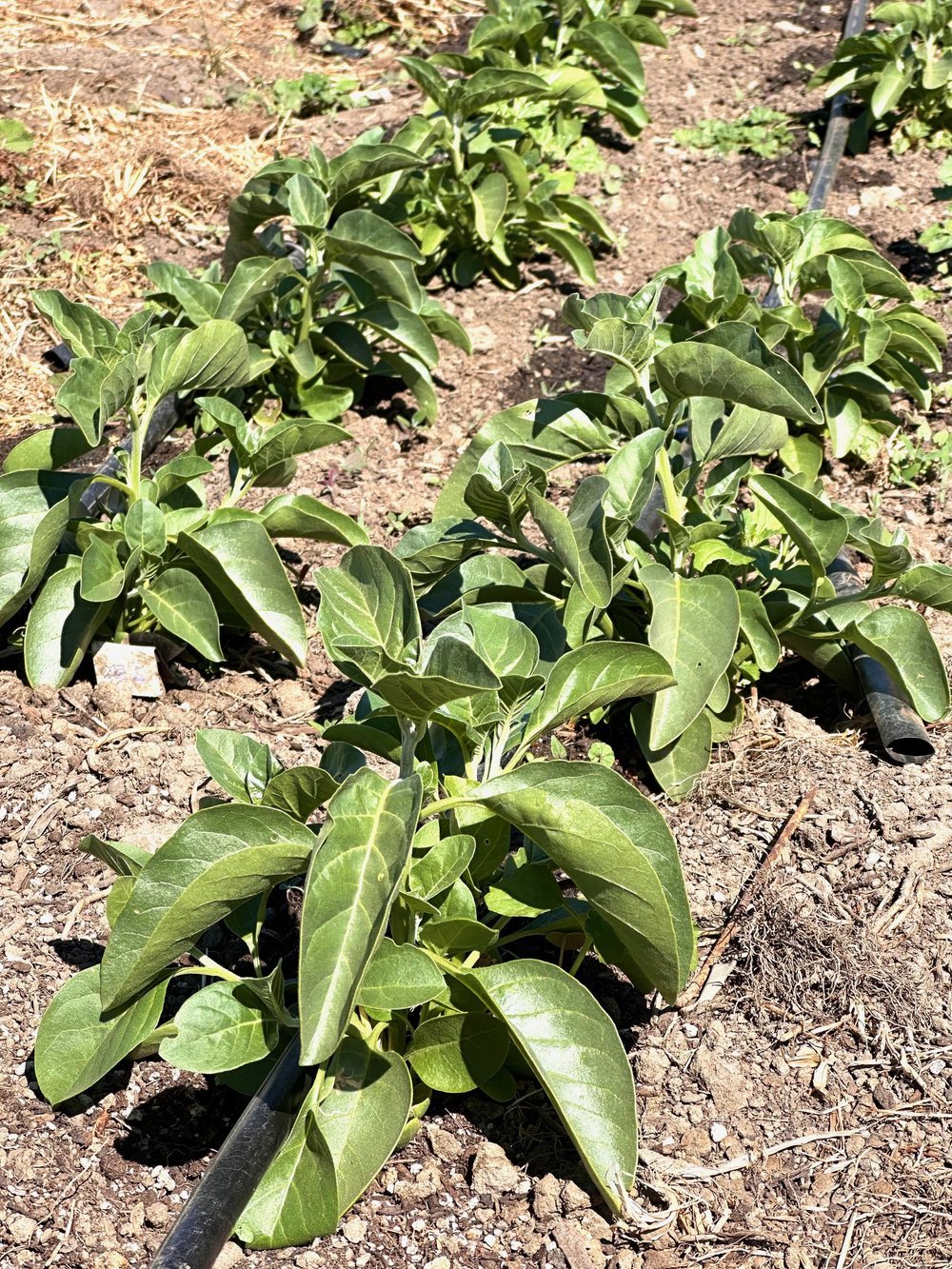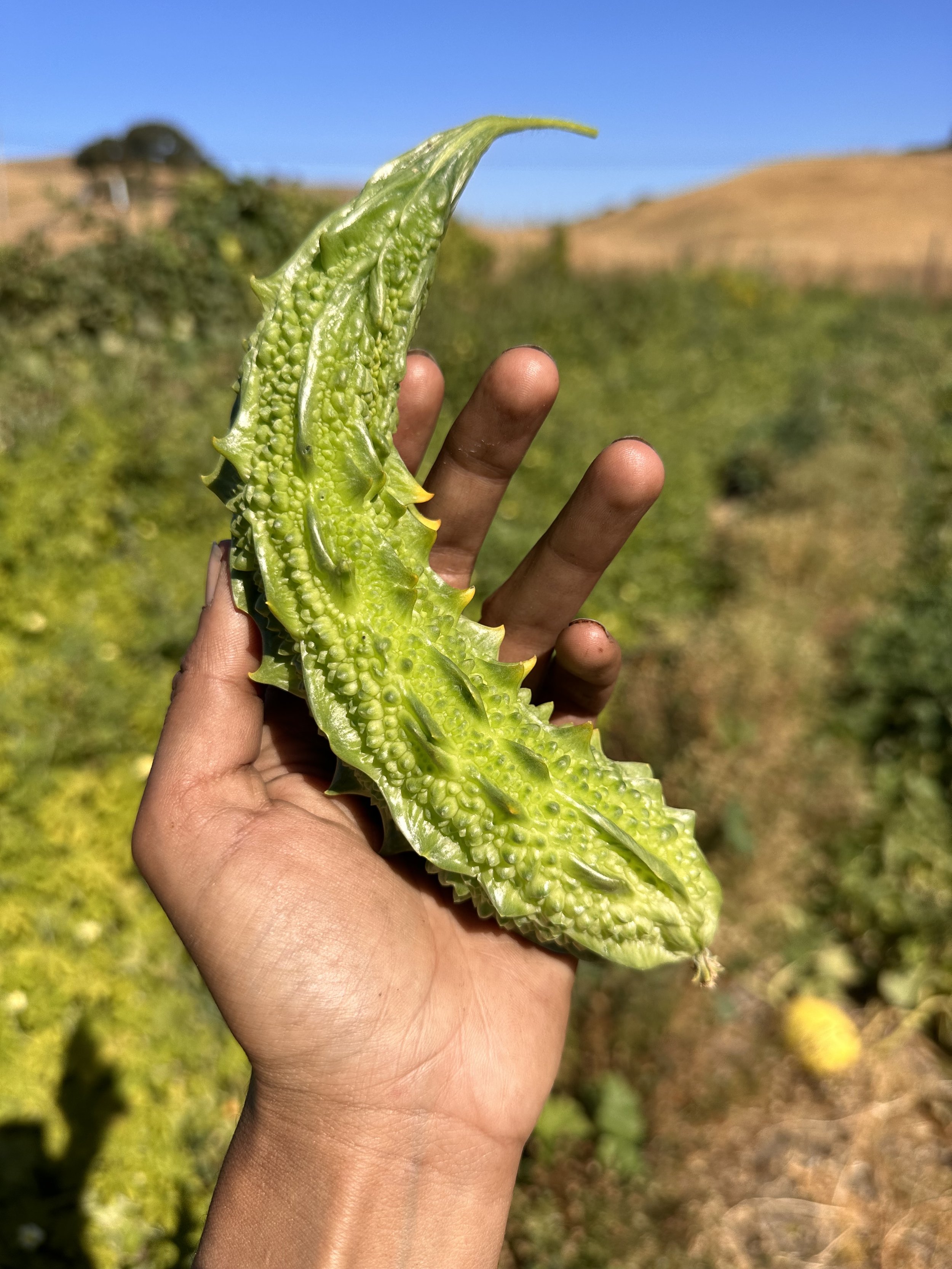 Image 1 of 3
Image 1 of 3

 Image 2 of 3
Image 2 of 3

 Image 3 of 3
Image 3 of 3




Ashwagandha
Ashwaganda is a reverred herb in Ayurveda. It grows as a small (2-3 feet tall) shrubby perennial in Zones 10 and higher and can be grown as an annual in Zones 9 and lower. The leaves have similar medicinal properties as the root and can be used fresh or dried in teas. Drought tolerant and easy to grow! Prefers full sun (at least 4 hours).
In Sanskrit Ashwagandha means smell of the horse which refers to both the herb's scent and its potential ability to increase strength. It is a revered herb in Ayurveda for its ability to both calm the nervous system and provide energy and strength. The medicine is most potent in its roots. We recommend growing the plant to full maturity (until November or December), then pulling up the entire plant and harvesting the roots. In the past we have cleaned the roots, dehydrated them and then pulverized them into a powder to add to tea blends.
Although Western sources promote Ashwagandha as great medicine, we must warn that it is a potent medicine that is not recommended for everyone. It has heating qualities, so those with excess pitta should take caution. Personally, we cannot even process the roots until Winter is in full effect as the heating qualities are too aggravating for us in the warmer months.
We have been stewarding these seeds for the past two years.
60 seeds per packet.
Withania somnifera
Ashwaganda is a reverred herb in Ayurveda. It grows as a small (2-3 feet tall) shrubby perennial in Zones 10 and higher and can be grown as an annual in Zones 9 and lower. The leaves have similar medicinal properties as the root and can be used fresh or dried in teas. Drought tolerant and easy to grow! Prefers full sun (at least 4 hours).
In Sanskrit Ashwagandha means smell of the horse which refers to both the herb's scent and its potential ability to increase strength. It is a revered herb in Ayurveda for its ability to both calm the nervous system and provide energy and strength. The medicine is most potent in its roots. We recommend growing the plant to full maturity (until November or December), then pulling up the entire plant and harvesting the roots. In the past we have cleaned the roots, dehydrated them and then pulverized them into a powder to add to tea blends.
Although Western sources promote Ashwagandha as great medicine, we must warn that it is a potent medicine that is not recommended for everyone. It has heating qualities, so those with excess pitta should take caution. Personally, we cannot even process the roots until Winter is in full effect as the heating qualities are too aggravating for us in the warmer months.
We have been stewarding these seeds for the past two years.
60 seeds per packet.
Withania somnifera
Ashwaganda is a reverred herb in Ayurveda. It grows as a small (2-3 feet tall) shrubby perennial in Zones 10 and higher and can be grown as an annual in Zones 9 and lower. The leaves have similar medicinal properties as the root and can be used fresh or dried in teas. Drought tolerant and easy to grow! Prefers full sun (at least 4 hours).
In Sanskrit Ashwagandha means smell of the horse which refers to both the herb's scent and its potential ability to increase strength. It is a revered herb in Ayurveda for its ability to both calm the nervous system and provide energy and strength. The medicine is most potent in its roots. We recommend growing the plant to full maturity (until November or December), then pulling up the entire plant and harvesting the roots. In the past we have cleaned the roots, dehydrated them and then pulverized them into a powder to add to tea blends.
Although Western sources promote Ashwagandha as great medicine, we must warn that it is a potent medicine that is not recommended for everyone. It has heating qualities, so those with excess pitta should take caution. Personally, we cannot even process the roots until Winter is in full effect as the heating qualities are too aggravating for us in the warmer months.
We have been stewarding these seeds for the past two years.
60 seeds per packet.
Withania somnifera



